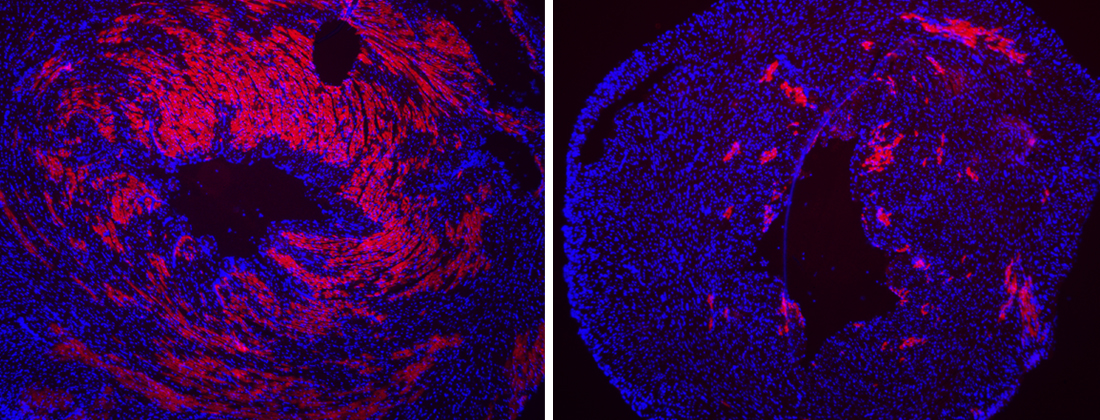Focusing on Cells’ Recycling Center, NCATS, Michigan Scientists Use High-Throughput Screening to Show Potential Approach Against Duchenne Muscular Dystrophy
February 7, 2020
Scientists have long pointed to malfunctions in the cell’s recycling center, or lysosome, as a key to understanding a host of degenerative diseases. In new research that leverages NCATS’ high-throughput compound-screening capabilities and expertise in lysosomal biology, an international research team has shown in a mouse model that manipulating the lysosome can help lessen the symptoms of Duchenne muscular dystrophy (DMD), a rare genetic degenerative disorder that affects muscles. The team reported its findings in the Feb. 7 issue of Science Advances.
Lysosomes also play a role in muscle-cell membrane repair, providing a source of membrane material and assisting in turning on the muscle membrane repair process. Calcium channels, protein pores that help keep a proper balance of electrolytes in the cell, help facilitate this repair.
In earlier work, University of Michigan’s Haoxing Xu, Ph.D., and his colleagues showed that mice that did not have a certain kind of functioning calcium channel in their muscle cell lysosomes exhibited early and progressive symptoms similar to DMD. The researchers wanted to find out whether increasing the activity of this channel (called TRPML1) through a drug-like small molecule or genetic changes would affect the lysosome and improve muscle repair.
Xu’s team collaborated with NCATS researchers, including Juan Marugan, Ph.D., Marc Ferrer, Ph.D., and Noel Southall, Ph.D., to identify and develop small molecules. Using a process called high-throughput screening to test thousands of compounds at once, the NCATS group identified compounds that could potentially boost the activity of poorly working calcium channels in DMD cells. The NCATS researchers developed tests to evaluate the compounds’ activity in muscle cells in the laboratory and narrowed their list of candidate compounds. The scientists chemically modified the molecules to make them more efficient and drug-like.
The NCATS and Michigan researchers subsequently showed that the compounds had protective effects in muscles in both a DMD mouse model and in human DMD cells. The compounds increased the activity of the target calcium channel. They also increased muscle cell membrane repair and reduced cell damage from DMD.
“Potentially, all of these forms of muscular dystrophy can be treated in this way,” said Xu. “This drug approach can target all muscle cells.”
The findings may have applications for Parkinson’s disease, amyotrophic lateral sclerosis and Alzheimer’s disease, which also are characterized by malfunctions in lysosomes. “We think that activating the lysosome will enable us to intervene in many neurodegenerative diseases,” said Marugan, adding that this outcome supports NCATS’ goal of finding ways to understand and treat many diseases at the same time. “We try to find mechanisms of action across diseases and examine fundamental pathways.”
Some of the small molecules have been patented and are ready for licensing.



